Test report Plustek film scanner OpticFilm 7600i review
With the OpticFilm 7600i, Plustek introduced in July 2009 the looked-for successor of the scanner Plustek OpticFilm 7500i into the market. Therewith, the OpticFilm 7500i had a durability of 2 years. The previous model had some weaknesses as for example the defective dust and scratch correction that was supposed to be a thing of the past with this new device. Thereby, the technical data do not differ from the previous model and their appearance is also identical. Thus, the 7600i is not a new scanner - it could be said that it is an error-free version of the previous model.
The available variants of the equipment also remain unchanged: the Plustek OpticFilm 7600i is either available with the software SilverFast SE-Plus or with the professional version SilverFast Ai Studio including the IT-8 calibration. As it was the case in the previous model OpticFilm 7500i, this software solution offers the user the features MultiSampling and MultiExposure for the reduction of the image noise and/or the increase of the dynamic range. It remains to be seen if, contrary to the previous model, these functions will actually provide an increase in the quality in the new model.
What is new in the case of the 7600i is that now, the device also works with MacOS. All previous models could be only operated with windows computers, but the new OpticFilm 7600i can be finally also operated with the operating system of Apple without any problem.
In this test report it will be cleared if the troubleshooting of the previous model has been actually successful, the performance the device will deliver in practice, and how the image quality of the OpticFilm 7600i actually is.
Equipment, accessoires and performance data of the film scanner
The box in which the Plustek OpticFilm 7600i is delivered contains everything what is needed for the digitalisation of 35mm images and more: apart from the scanner itself, there is an adapter for film strips for a maximum of six images and one for up to four framed slides included in the package. Moreover, a power supply, a USB cable, a bag that no one really needs and a software package are included. This consists on the NewSoft Presto! toolset, the Plustek QuickScan-programe as also the professional scan software SilverFast SE-Plus and/or SilverFast Ai Studio. In case one chooses the Ai Studio version, the IT-8 calibration target is additionally added.
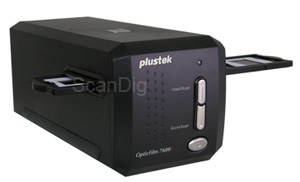
The maximal optical resolution of the Plustek OpticFilm 7600i is about 7200ppi; this is an extremely high value, at least written on paper. By scanning a 35mm negative or a 35mm slide with this resolution, an image of approximately 70 million pixels is generated. With a colour depth of 24bits, the resulting uncompressed image file is of a size of approximately 210 Mbytes. These data will double to approximately 420 MByte by scanning with 48bit colour depth. A fast computer is indispensable in order to process such huge big image files. In our resolution test that will follow further in this text we will measure the actual resolution of the scanner and will compare the resulting resolution with the nominal resolution.
Due to the integrated infrared light source, with the OpticFilm 7600i it is possible to generate some scans with the dust and scratch correction iSRD that is based on the hardware. The MultiExposure-function enables the scanning of an original with two different expositions: a much too dark and a much too bright scan is generated and both are then added to one image. By this way, the dynamic range is supposed to increase. Moreover, it is also possible to make some multiple scans. Thereby, the film is also scanned several times as it is the case in the MultiExposure (up to sixteen times) but not with different exposures. The purpose of the multiple scan is to minimize the image noise that specially appears in the dark image areas by chance.
As it is the case in all models of the OpticFilm-series, at the front side of the device there is, apart from the power-button, also the IntelliScan- and the QuickScan-button. With an activated QuickScan-application (as soon as the programe is installed, this small tool sets into the System-Tray-area of the task bar), by pressing the first button, one starts the QuickScan-software, while by pressing the last button, one starts SilverFast. We know this already from the previous models.
Thus, those who compare the equipment list and the technical data of the Plustek OpticFilm 7600i with those of the previous model OpticFilm 7500i will not find any differences. In fact it is the same device with some small internal modifications.
Installation and initiation
The provided software is easy to install without any problem. In the CD-folder there are two CDs: one with a driver software and the provided tools (see chapter Software), as also one with the scan software SilverFast.
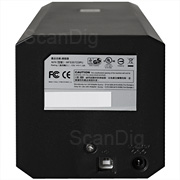
Contrary to the case in most of the other scanners, during the installation of the Plustek OpticFilm 7600i, first, the scanner has to be connected to the computer and then the software can be installed. Once the scanner is connected to the power supply and to the computer via USB, the operating system automatically recognizes a new device, and the assistant for the adding of the hardware is started. One then follows the instructions on the screen an is asked to put in the CD with the driver software, whereby after the confirmation, the installation automatically runs. The installation of the SilverFast-software is as easy. At the end of the installation, the serial number that is written in the CD folder has to be typed in and the device is ready for operation.
In case some questions arise,a detailed and printed quick-start instruction can help during the installation. Also, some detailed instructions of use are provided on CD as PDF document; a printed version of the manual is not available, thus, one should print it by oneself. The textbook SilverFast - The official Book from Taz Tally provides optimal instructions and is also a reference book for the SilverFast scan-software.
Now, one has two possibilities to accomplish a scan: with QuickScan or with SilverFast - one only has to press the respective button at the front part of the scanner. The exact way to proceed is explained in the following text.
Scanning framed 35mm slides
In the scope of delivery of the Plustek OpticFilm 7600i there is the same slide adapter as provided with the previous model: an adapter for up to four framed 35mm slides that are fixed to the right position by some springs located under the cover. The covers above the springs provide some additional halt to the slides, but they also avoid that frames of a thickness exceeding 3mm can be put in.
The slide frame holder has 4 slots, whereby there is a spring at the left side of each one that has to be pressed together in order to put a slide in and at the right side there is a groove so that one can reach into the slot with a finger. At the beginning, the insertion of a slide into a slot is difficult, as one has to insert the slide and squeeze the spring simultaneously. In case of slipping, one can easily touch the film and even risks to press the film out of the frame. Specially during the first attempts with a film holder one should in any case wear some Cotton Gloves so that in case of slipping one does not damage the film surface. After a certain period of introduction, the loading of the film adapter gets easier.
The insertion of normal plastic frames results to work without any problem after some time of practice. In case of carton frames, one should be careful, as due to the spring power, the frame can be easily bent. In case of very thick glass frame slides, the additional fixations fail, but the spring can be squeezed to such an extent that the frames can anyway be put into the film adapter. Obviously, such a compulsory measure is not good for the springs.
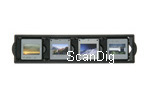
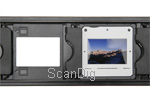
As one will mainly scan with SilverFast in order to obtain some good image results, we will only shortly describe the way to proceed in case of scanning with QuickScan: with a double-click on the icon that is located on the system-Tray, a window appears in which one can set all ajustments needed for the scanning: here, for example the type of original (slide or negative), the desired file format (JPG or TIF), the file name, the destination file and the desired resolution as also several adjustments as brightness and contrast can be determined. Moreover, one can choose here whether first a pre-scan should be made or the fine scan straight away. Once all ajustments are done, this window can be closed. In order to start the scanning, one only needs to press the QuickScan-button of the device and then the scanning will be accomplished with the ajustments set.
As a professional software, SilverFast of course offers much more possibilities of adjustment an provides a clearly better image result. Thereby, the scanning proceeds in accordance to the proved scheme: the prescan is to be accomplished, the adjustments have to be made and the fine scan can be started. Entering deeper into the functions offered by SilverFast would go beyond the scope of this scanner test. Only this much can be said: this software offers a beginner the possibility to get some good results after some introduction as well as the professional user all possibilities for the perfection of the scans. More information about SilverFast is obtainable in our SilverFast website.
compared to the previous model, the handling of the OpticFilm 7600i has not changed. It is not possible to introduce the slides straight into the scanner the way it is possible, for example, in the case of Nikon CoolScan V ED or the case of the Reflecta RPS 7200 Professional. Instead, the slide frame holder has to be charged and then be manually introduced one by one into the scanner. The slide holder with 4 inserted slides suggests the user to charge all at once in order to be scanned together automatically. But it is not like that; actually, after each scan, the slide holder has to be repositioned. Thereby, some screen dots provide the right positioning of the individual slides in the scanner. What a pitty, as many Plustek-fans hoped that, with the new model, an automatic film transport would be finally integrated into the device, but it is not like that.
Those who want to save some time during the scanning of the framed slides can buy straight away a second Frame Adapter additionally, so that it is possible to charge the second film adapter while the first is in the scanner. Moreover, in case the springs of one adapter get damaged, one has immediately a replacement available.
Thus, scanning framed slides with the Plustek 7600i remains being a rather complicated and labour-intensive matter: the insertion of four framed slides into the slide holder is time consuming and has no avantage in comparison to those scanners in which it is possible to introduce a slide straight away. The charging of a slide adapter would only make sense if it was possible to process several slides at once in the batch modus, but this function has not been provided by Plustek with the newest model.
Scanning small format film strips
The film adapter for 35mm images of a length for up to 6 images that is included in the scope of delivery can capture either one single long film strip as also several short ones. It is provided with some bars that help to maintain the film plain. This is why during the insertion one has to consider that the bars of the film strip are located exactly underneath and/or on the bars of the adapter. With one single film strip this is not a problem but in case of several short film pieces this can result in a very fiddly matter.
Unfortunately, the cover of the film strip adapter can still not be completely opened at 180 degrees: at approximately 110 degrees it cannot be pushed further anymore and one has to be careful not to tear it off by mistake. Moreover, it continuously disturbs during the insertion of the film. Since several generations, this design of Plustek-scanners remained unchanged; it would have been time to settle this.
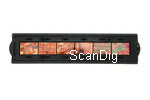
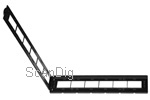
It is very easy to insert some long and plain film strips into the adapter, but the insertion of curved or waved film strips results to be very problematic, as there is no gripping mechanism or something similar to that. Thus, a plain film strip is put into the adapter, pushed according to the bars and then the cover is carefully closed. In the case of a curved or waved film strip, a lot of fiddly work is required: one tries to somehow get the film strip more or less positioned, the film strip adapter is then slightly closed, then the horizontal alignment of the bars has to be accomplished and by this way, the cover has to be slowly closed. Those who have a lot of curved or waved film strips to scan will need some good nerves in order not to get desperated by this meticulous work. During this procedure, the half-opened cap of the adapter that is faced upwards stands in the way. It only takes one false move and the cap is broken off. Not least because of that, we recommend the use of a second Film Strip Adapter, so that one can continue scanning when the first adapter does not work anymore. But with a second film strip adapter one also has the advantage that it can be charged unhurriedly while the other is in the scanner.
During the work with film strips one should not miss to wear some Cotton Gloves or even Anti-Static Gloves. It is almost not possible to insert a film strip and to position it with bare hands without touching the film surface with the fingers. With some fine gloves, the film strips can be comfortably touched and one does not have to be afraid of destroying the film surface. For removing the film strips from the film strip adapter, we recommend some Tweezers, but in any case with flat tips as otherwise the film would be scratched.
The scanning of negatives works in the same way as the scanning of the framed slides: one pushes the charged film adapter manually, image by image, into the scanner. Thus, with the Plustek OpticFilm 7600i, the scanning of film strips is rather laborious. Those who have a lot of normal film strips will be better off with the models which have an automatic film strip feeder with batch modus, for example the Reflecta RPS 7200 Professional. But those who have some small film strips mixed with some single images will be better off with such an adapter, even though the insertion is a little fiddly.
The provided software
Compared to the previous model, the software equipment of the Plustek OptikFilm 7600i has also not changed. But this also must not be, as the package is all around satisfying: in the scope of delivery, there is the QuickScan-programe, the NewSoft Tools Presto! Imagefolio, Presto! PageManager and Presto! ImageExplorer as also of course the excellent LaserSoft Imaging SilverFast SE-Plus and/or SilverFast Ai Studio. Therewith, Plustek provides every software needed for the scanning.
As already mentioned, QuickScan is apt for the fast and easy digitalization of film material, but it hardly offers possibilities for the adjustment. ImageFolio is a simple image processing programe that has a function volume that is barely beyond the MS-paint programe that is inclued in Windows. Thus, it cannot compete with Adobe® Photoshop® Elements or Paintshop Pro. But therefore, it is provided for free within the scope of delivery. With the PageManager, it is possible to administer one's documents as images and text documents, send them right to the suitable programes or generate PDFs from the scans with Quickscan. The also included ImageExplorer is a programe with which one can view and sort one's images.
SilverFast is a very comprehensive scan-software that, after some time to get introduced into the programe, can also be well handled by a beginner. It offers all possibilities to the professional user for optimizing the scans. It enables the scanning with MultiExposure and MultiSampling. With the version 6.6.0 that was attached to our test device, MultiExposure is now also possible with a colour depth display of 24bit. More information about SilverFast and the different versions can be found in our website about SilverFast.
In total, it can be said that the Plustek 7600i is delivered with an excellent software package. SilverFast Ai Studio is the ultimative scan-software and also the other tools a very useful. Unfortunately, Adobe® Photoshop® Elements is missing, a programe that belongs to the standard scope of delivery of almost all other scanners (also cheaper ones). Thus, those who want to accomplish some image processing after the scanning will not get too far with the standard software and should better get a better image processing programe as Photoshop® Elements; the freeware Gimp is an alternative for free.
Image quality
Now we come to the most important part of our test that is the image quality of the Plustek OpticFilm 7600i. According to the producer, the image quality has been optimized and the deficits as for example the bad working dust and scratch correction of the previous model have been eliminated. Now we will see if this also applies in practice.
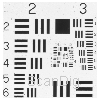
We start with the resolution test: during a test scan with the USAF-1951 target with a maximum resolution of 7200ppi, the horizontal and vertical lines of the element 6.1 are hard to distinguish. According to our Resolution Table this results in an effective resolution of about 3250ppi. Thus, in practice, the Plustek OpticFilm 7600i does not even provide 50% of the resolution that is mentioned in the package. Compared to the previous model Plustek OpticFilm 7500i, the effective resolution of 3500 dpi has worsen to 3250 dpi. It is annoying if one purchases a scanner that in practice only provides 43% of the resolution that is actually promised by the producer.
But still, the resolution of 3250 dpi is an acceptable value and still higher than the one of some other scanners. A small format image that is scanned with 3250 ppi provides a digital image file of approximately 14 megapixels, thus sufficiently big image files for big enlargements and high quality image copies up to a DIN A4 (21 x 29,7 cm) format.
Unfortunately, it is a typical characteristic of almost all scanners with a nominal scanning value of 7200 dpi, that in practice, they even do not achieve 50% of the nominal resolution. This has a decisive disadvantage for the user: by scanning a small format image of 7200 ppi, one gets a huge image file with approximately 70 megapixels. Such an image file needs 210 megabytes of memory, in case of a scanner with a colour depth of 48 bits even 420 megabytes of memory respectively. In order to handle and to process such data, a very fast computer and a lot of memory space in the hard disc are needed. In addition to that, the image data are only inflated, as, instead an actual image information of 14 megapixels, one saves 70 megapixels, thus five times more. Thus, 80% of the contence of the digital image files are only doubled pixels.
If a scanner with a nominal resolution of 7200 dpi provides in practice a resolution of only 3250 dpi, then it is obvious to scan with half of the resolution of 3600 dpi. But a resolution test with 3600 dpi resolution resulted in only 2600 dpi of effective resolution provided by the scanner, thus approximately 20% less than in the case of a scan of 7200 dpi. But a scan with effective 2600 dpi results in an image file of only about 9 megapixels, this is clearly below the level of a digital camera.
Thus, in order to keep the actual resolution of 3250 dpi, one has to scan with 7200 dpi; this results in very long scanning times, as we will see in the chapter Scanning-Speed. And as it does not make sense to save some image files that are inflated to 70 megapixels, these image files have to be reduced again in Photoshop® to the effective 14 megapixels after the scanning - a very laborious step to be done for each image.
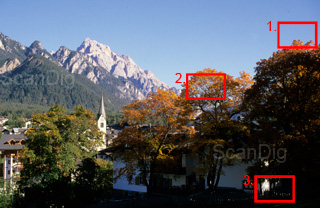
In order to give an impression of the image quality of the OpticFilm 7600i, we will use the image shown here: thereby, we have a deeper look to the three marked outcuts in order to evaluate the different aspects of the achievable image quality and compare it to the one of the other scanners.
The most weak point of the OpticFilm 7500i was the useless dust and scratch correction based on the hardware. According to the producer, in the new model, the infrared channel needed for that has been revised and is now supposed to provide some better results. The results of our tests were as follows: the iSRD-function has really improved! Now, it does not generate any image errors caused by the removal of the fine image details, and a big part of the dust particles are eliminated. But the results are still not comparable with the ones of a Nikon scanner. Even the ICE-function of the cheap CrystalScan 7200 of Reflecta performs better.

In the adjacent example that shows an enlargement of the first marked image cutout above, it is visible that the Reflecta CrystalScan7200 certainly also did not remove all the dust particles on the film surface of the scanned slide, but it still removed more interferences than the Plustek OpticFilm 7600i did. A scan with the Nikon Super Coolscan 5000 with an activated ICE-function does not have any image interferences anymore and practically represents the optimal solution of an implemented automatic dust and scratch corrector. Click on the thumbnail and the opening image switches every three seconds between the scans done with the Plustek OpticFilm 7600i, the Reflecta CrytalScan 7200 and the Nikon Super Coolscan 5000.

What also stands out in a negative way is also the blurring of the scans done with the Plustek OpticFilm 7600i. The scans done with the Nikon Super Coolscan 5000 and the Reflecta CrystalScan 7200 appear to be clearly sharper. The adjacent enlargement of the second cutout illustrates this circumstance: the high sharpness of the Nikon Super Coolscan 5000 is not achieved. The scan with CrystalScan 7200 appears less sharp than the one of the Nikon, and the scan with the OpticFilm 7600i shows a clear blurring in comparison. In order to discard that we used a defect Plustek-model in our test, we repeated the test with a second and a third device: the result is the same as it is shown in the image. All scans were of course accomplished without any software-based sharpening. Thus, in case of the Plustek OpticFilm 7600i, one should not miss to add a slight unsharp masking.
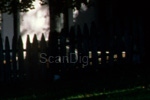
In the third adjacent example that shows the enlargement of the third image cutout, the image results of the dark image areas of the three above mentioned scanners are compared: Nikon Super Coolscan 5000, Reflecta CrystalScan 7200 and Plustek OpticFilm 7600i. All scans were accomplished without MultiExposure. It is clearly visible that here, the Nikon-device is unbeaten and that it fully plays its huge dynamic range. The clearly cheaper scanners Reflecta CrystalScan 7200 and Plustek OpticFilm 7600i are quite equivalent in this discipline, whereby the Reflecta-device generates some more image noise.
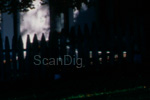
The density of the Plustek OpticFilm 7600i has not changed in comparison to the previous model OpticFilm 7500i: the lights and the shades have sufficient drawing. In a simple scan, the OpticFilm 7600i still has the disturbing peculiarity as the previous model had: the shady areas appear very dull. But in case of the new modell, a MultiExposure-scan will help out.
Contrary to the OpticFilm 7500i where the Multi-Exposure did practically not provide any improvement, the MultiExposure scan with the new model has now the effect that the shades are clearly more defined and much less dull. This is also demonstrated in the third image cutour of the adjacent picture. Here, the representation changes between the scan with and the scan without the MultiExposure. But in the case of the 7600i, the dynamic range can also not be increased with the MultiExposure.
Conclusion: The image quality itself has improved in the new model to that effect that the dust and scratch correction provides now some useful results. But unfortunately, compared to the other scanners, it still does not work in a satisfying way. Thus, also in case of the new model it is still necessary to accomplish a retouching image processing programe after the scanning. But it is now required in a much lower extent as it was the case in the previous model. The resolution and the dynamic range are quite good for a scanner of such a price category. The slight blurring of the scans should be still improved in the follwing model.
Scanning speed
In order to detect the scanning times shown in the follwing tables, the scanner has been connected via USB 2.0 to a computer with an Intel Quad-Core 2.4 GHz processor and 4GB memory. We first present the times for the scanning of the negatives:
| Procedure |
Duration without iSRD |
Duration with iSRD |
Duration with iSRD + MultiExposure |
| Preview |
0:15 min |
0:15 min |
0:15 min |
| Negative-Scan with 2400 ppi Resolution |
0:38 min |
1:49 min |
3:25 min |
| Negative-Scan with 3600 ppi Resolution |
0:53 min |
2:38 min |
4:48 min |
| Negative-Scan with 7200 ppi Resolution |
2:58 min |
11:37 min |
15:44 min |
The duration of slide-scans is shown in the follwing table:
| Procedure |
Duration without iSRD |
Duration with iSRD |
Duration with iSRD + MultiExposure |
| Preview |
0:15 min |
0:15 min |
0:15 min |
| Positive-Scan with 2400 ppi Resolution |
0:38 min |
1:46 min |
3:23 min |
| Positive-Scan with 3600 ppi Resolution |
0:53 min |
2:36 min |
4:48 min |
| Positive-Scan with 7200 ppi Resolution |
2:55 min |
11:24 min |
15:49 min |
What is outstanding is that the digitalization of the slides and negatives practically takes the same time. In this concern, the previous model made some more or less clear differences. Also other scanners have clearly longer scanning times for the negatives compared to the scanning times needed for the positives. But unfortunately, the OpticFilm 7600i is not faster than its previous model, although the comparison of the figures mentioned in the tables show an increase in the speed.
The shorter scanning times of the scans done with iSRD are due to the fact that we detected the times with a much faster computer, so that the analysis on the infrared channel took place much faster. A scan without iSRD takes as much time as it is the case with the old model, as there is not much to calculate in a normal scan but the scanner itself requires time. For comparison, we connected the scanner to the same computer with which we measured the scanning times of the previous model: the times barely differ from each other compared to the 7500i.
A scan with full resolution and an activated iSRD-function also still takes some good 11 minutes in connection to a current top-computer with the Plustek OpticFilm 7600i. The Reflecta CrystalScan 7200 needs for a scan in the maximum resolution (also 7200ppi) clearly less time with 8 minutes. If with the Plustek OpticFilm 7600i, one additionally activates the MultiExposure function in SilverFast Ai Studio, then the scan takes a good quarter of an hour with full resolution. Thus, therewith, the Plustek OpticFilm 7600i can be classified among the slowlier scanners of the market.
In the chapter Image Quality we have shown that one has to scan with the maximum resolution of 7600 dpi in order to get the maximum effective 3250 dpi. Thus, with this resolution, barely 3 - 4 scans per hour can be made in case the automatic dust and scratch correction and also Multiexposure are activated. Thus, those who have a big photo collection to scan might better plan several months or years for such an action.
Resume, conclusion
The Plustek OpticFilm 7600i only differs in one thing from its previous model: the hardware-based dust and scratch correction iSRD does not generate any image interferences anymore and therewith it is finally useful. But unfortunately, it does still not provide some fully satisfying results, as many dust particles are not recognized and removed. The resolution decreases from effecive 3500 ppi in the case of the previous model to 3250 ppi in case of the OpticFilm 7600i. The Multiexposure function results in the case of the OpticFilm 7600i in a more beautiful shadow detail, thus it is useful now.
According to our opinion, only a correction was needed instead of a change in the model, as otherwise, the new device is practically identical to the previous model. After all, with a change of the model, the older models lose significant value. An automatic film adapter transport would have been a real progress in order to digitalize 4-6 images in the batch modus. But unfortunately, Plustek did not provide this to the OpticFilm 7600i.
Buying a film scanner
Please, feel free to visit our online shop - it's the only shop on the Internet which is fully specialized on film scanners and accessories! We can provide you with any film scanner at an extremely attractive price and we also can supply you with accessories such as film holders or optional adapters.
Back to the film scanner tests index
|